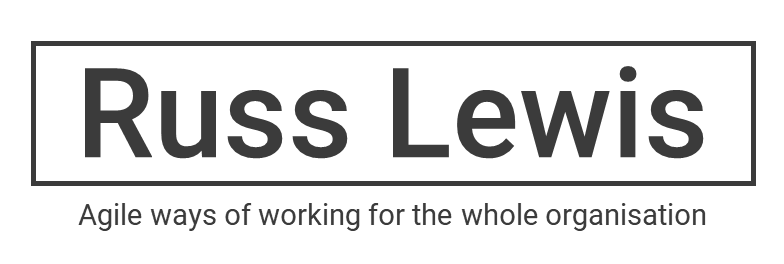Today’s challenge is that traditional management approaches, where managers tell people what to do and how to do it, are not as effective as they once were. Agile transformation takes years, but changing management’s focus from people to tensions could be a better solution. It is simpler, faster, and considerably more cost-effective.
Management is the dominant force across most organisations and especially in hierarchies. Managers and leaders create the environment and constraints for work, individually and collectively. Changes in management and management’s approach affect the way people do their work, which then affects organisational performance.
Agile transformation is a signal
When executives recognise the need for an agile transformation they signal the need to update the way that organisation is organised and managed. This is true because the way organisations are managed determines their performance. Leaders’ decisions set strategy and governance, their values and behaviours produce cultural norms, and their standards and competence control the quality of the organisation’s output.
The barriers to business agility or digital transformation are creating the conditions for teams to deliver effectively. In the digital age, that means predictable and agile delivery of products, features, and services. Adopting the perfect scaled agile framework or improving product ownership in tech can highlight those barriers, but it requires managers to identify and dismantle them. Individual teams, and their managers, often become agile using Scrum or Kanban, and SAFe or LeSS can help with cross-team co-ordination, but improvement stops when it hits legacy HR, accounting, and social constraints. Worse, the collective desire for equality and transparency rarely overcomes the personal fear of challenging rank, bullying, and discrimination.
How tensions help overcome barriers to agile transformation
Amplifying the tensions moves the focus away from people’s beliefs and behaviours and onto the situation in its current context. Instead of defending the way budgets have been separated between business as usual (BAU) and innovation, the tensions between run the BAU and innovation can be identified and discussed. A resolution might be to prioritise innovation for the rest of this year, allowing people at every level to prioritise their work appropriately.
Tensions can create conflict too, leading to internal friction and delays. Recognising that speedy delivery and maintaining quality was a persistent conflict between product developers and project managers, WiseTech resolved the conflict by raising the value of quality over delivery speed. The firm created a mantra, “slower today, faster forever" which anyone could say if they felt quality was being compromised.
What is interesting from an agile transformation perspective about WiseTech is that recognising and managing the tension was an act of leadership that was initiated from mid-manager level. That it was supported, shows that senior leadership has indeed created the conditions for people to succeed.
When will the new software be ready?
Developers dread questions about delivery dates because they know how much uncertainty exists in software development. Every line of code is an experiment and nothing can be considered done until the customer has tried it out and agreed it works. But, so many stakeholder's plans depend on the delivery date for the finished system, such as training, handover, and invoicing. What if stakeholders approached this perennial question as a tensions management problem?
Tensions are caused when two or more forces pull in different directions. In this case, planners need a delivery date because it overcomes a significant barrier to their work, whereas developers avoid giving delivery dates because doing so creates problems for them. Surprisingly, dates are not the real source of this tension.
The source of the tension
Plan-driven activities, such as training, onboarding, and invoicing, have pre-determined outputs and predictable value. Software development, however, is an emergent value activity. Its output will only be known after the code has been written, tested, and accepted by the customer. Predictable value and emergent value activities are so different, that they need different methods of control. Lifetime-long project plans for predictable value activities and days' long, agile plans, for emergent value activities.
Having established the real tension, a compromise could be to agree an overall time span, say one year, and then accept delivery in increments, say one milestone per month. Plans could be made for the final handover (satisfying the planners) with incremental acceptance satisfying the developer's need to validate the work done at each milestone.
All agile methods are based on regular inspect-adapt cycles (iterations) to allow frequent course correction and incremental delivery of functionality to ensure continuous progress is being made.
Summary
I started by offering a tensions-based approach to agile transformation that is better suited to the digital age than managing people as resources. I ended by showing how managing tensions aligns with the iterative and incremental methodology of all Agile methods.
Photo by Dan Dennis on Unsplash







